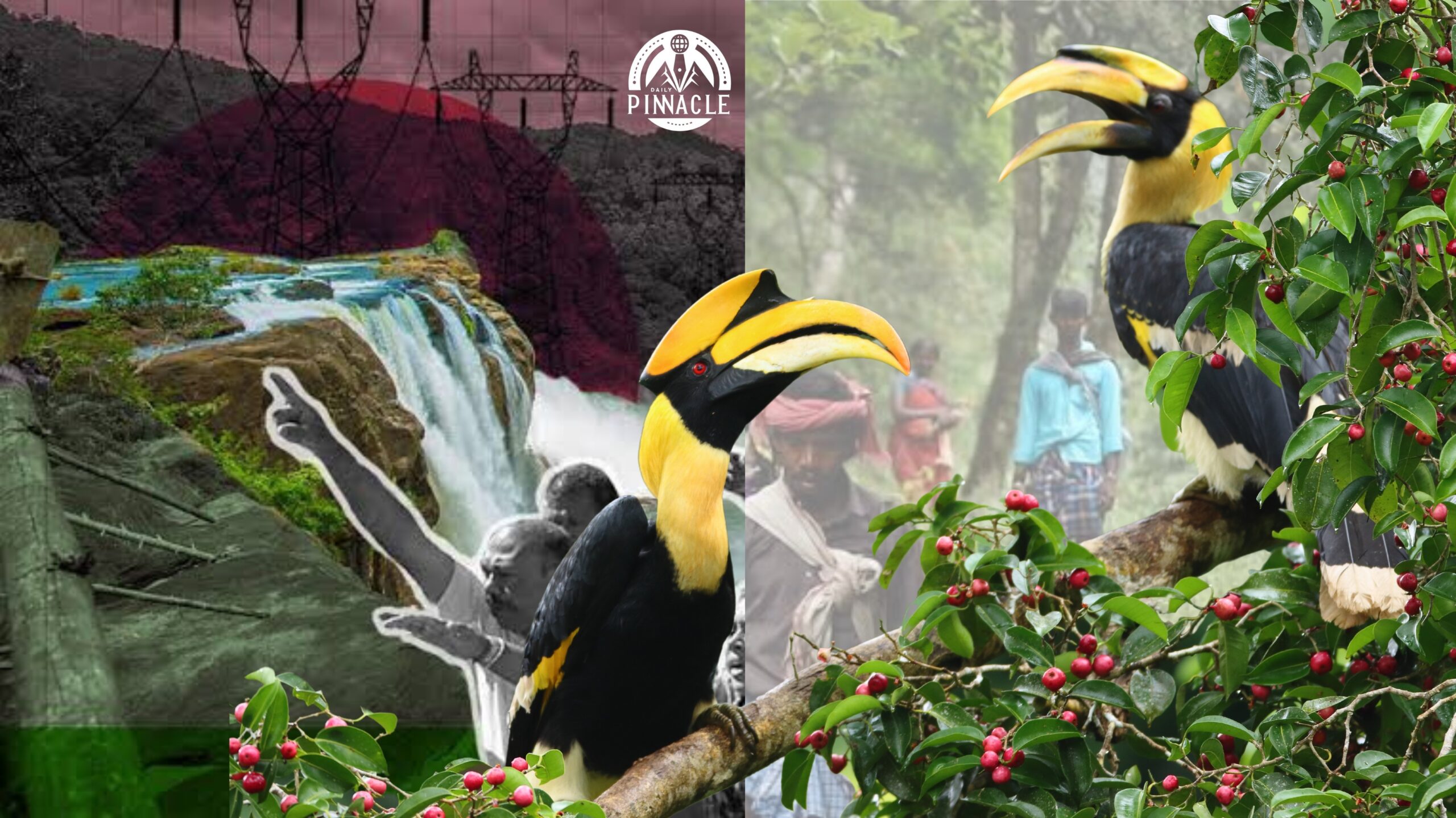Kerala, nestled in the lush, wilderness of the Western Ghats and teeming with life, is home to one of nature’s most captivating birds: the hornbill. But this isn’t just a story about a bird with a fancy casque and an impressive wingspan. This is also a story about the Kadar tribal community, a group of forest-dwelling people who’ve gone from being accused poachers to the hornbills’ most ardent protectors. It’s a tale of survival, resilience, and, yes, a fight against both colonial and modern exploitation.
From Villains to Heroes
The Kadar weren’t always celebrated conservationists. For decades, they were accused of hunting hornbills for meat and raiding nests for eggs. It was an easy narrative to sell: tribal communities as destructive elements, living off the land with little care for sustainability. The truth, of course, was far more complex. The real threats to the hornbills were deforestation, habitat destruction, and government-backed development projects—most infamously, the British tramways that gutted the Parambikulam forests for timber in the early 1900s. Post-independence, the pattern continued, with dams and plantations eating away at the Western Ghats.
But by 2007, the Kadar decided to flip the script. With support from the Western Ghats Hornbill Foundation and the Forest Department, they transformed into conservation warriors. They started monitoring hornbill nests, planting native trees, and preventing forest fires. The very people who were once blamed for the birds’ decline became their saviours.
Read more: Off-limits and off-grid in India
Symbiosis: How Hornbills and the Kadar Need Each Other
The hornbills are more than just beautiful creatures; they’re essential to the forest ecosystem. As “farmers of the forest,” they disperse seeds far and wide, ensuring the growth of new trees. For the Kadar, a healthy forest means survival. It provides food, shelter, and identity. The relationship between the two isn’t just ecological—it’s existential.
Today, thanks to the Kadar’s efforts, hornbill populations have rebounded dramatically. Nesting sites have skyrocketed from just 12 in 2007 to an astounding 127. It’s not just about numbers; it’s about rewriting the narrative of coexistence. The Kadar have proven that conservation isn’t about keeping people out—it’s about bringing them in as stakeholders.
The Dam Controversy: Nature vs. Development (Again)
Enter the Athirappilly hydroelectric project, the latest chapter in Kerala’s long history of “development” vs. “everything else.” The project proposed flooding 136 hectares of pristine forest—a critical habitat for the hornbills and home to hundreds of Kadar families. The dam promised electricity and progress, the kind of buzzwords that make politicians salivate. But what about the cost? Displacement, destruction, and the erasure of an ecosystem.
The Kadar didn’t back down. They rallied conservationists, environmentalists, and tribal rights activists to oppose the project. The fight wasn’t just about saving trees and birds; it was about saving their way of life. And they won—at least for now. The project was shelved, marking a rare victory where nature and indigenous rights trumped concrete and commerce.
Colonial Exploitation and Its Aftershocks
The British may have left in 1947, but their legacy of exploitation lingers. The tramways they built to export timber not only decimated the forests but also displaced the Kadar. Post-independence, things didn’t improve much. The Kadar were pushed around for dam projects, plantations, and “modernization” efforts. Even the Forest Rights Act of 2006, designed to protect indigenous communities, has been more promise than practice. The Kadar have had to fight tooth and nail to assert their rights to the very forests they’ve lived in for centuries.
Lessons from the Kadar-Hornbill Partnership
The Kadar story isn’t just about one community or one bird. It’s a masterclass in how conservation works when it’s community-driven. It’s proof that local knowledge, when paired with scientific expertise, can achieve miracles. The Kadar don’t just protect the hornbills—they protect the forests, prevent poaching, and stop fires before they spread. They’ve even taken on the role of environmental educators, ensuring younger generations understand the importance of their efforts.
But let’s not romanticize their struggle. The Kadar’s achievements have come despite systemic neglect and exploitation. They’ve been cheated, displaced, and sidelined by colonial powers and successive governments. And yet, they endure, proving that resilience isn’t just a buzzword—it’s a way of life.
Why This Matters
The Kadar-hornbill partnership isn’t just a feel-good story for wildlife magazines. It’s a model for how we can approach conservation in the 21st century. Here’s the thing: conservation isn’t about fences and fines. It’s about inclusion. It’s about recognizing that the people who live closest to nature are often its best protectors.
This isn’t just about hornbills or the Western Ghats. It’s about a world where development is often a euphemism for destruction. It’s about asking hard questions: Who benefits from these projects? Who pays the price? And most importantly, can we afford to keep choosing short-term gains over long-term survival?
The Fight Ahead
Despite their successes, the Kadar’s fight is far from over. Development pressures continue to loom large, and their rights are still precarious. The Athirappilly dam may be on hold, but other projects will surely follow. The question is whether Kerala—and India—will learn from the Kadar’s example or continue repeating the mistakes of the past.
For the hornbills, the stakes are clear. Without the forests, they won’t survive. And without the hornbills, the forests themselves could wither away. The Kadar understand this better than anyone. That’s why they’ve dedicated their lives to protecting a bird that, in turn, protects them.
Conclusion: When People and Nature Work Together
The Kadar and the hornbills have shown us what’s possible when humans and nature work together instead of against each other. Their story is one of mutual survival, where saving one means saving the other. It’s proof that conservation doesn’t have to be a battle—it can be a partnership.
So the next time you hear a hornbill’s call echoing through the forests of Kerala, think of the Kadar. Think of their resilience, their courage, and their wisdom. Because in a world where we’re constantly told to choose between progress and preservation, the Kadar remind us that there’s a third option: coexistence.
Watch: Kadar and Hornbill




